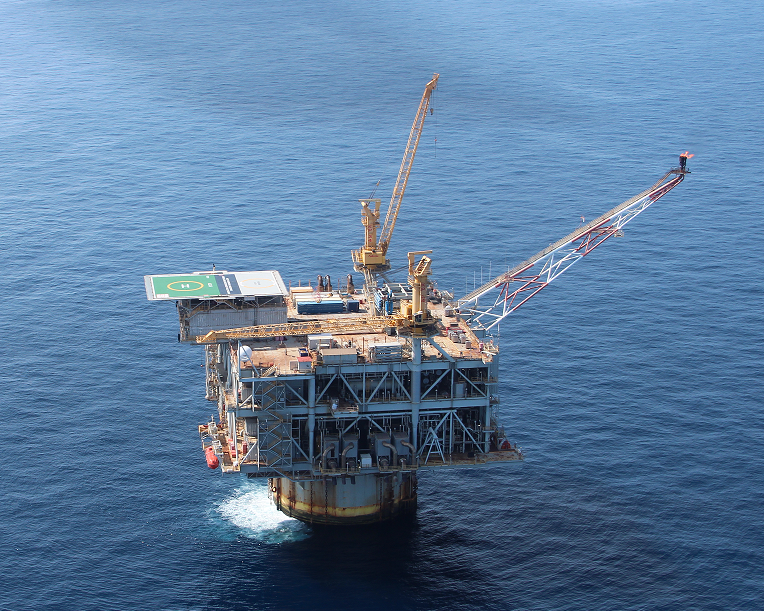You are viewing ARCHIVED content published online before Jan. 20, 2025. Please note that this content is NOT UPDATED,
and links may not work. Additionally, any previously issued diversity, equity, inclusion or gender-related guidance on
this webpage should be considered rescinded. For current information, visit
News Items | Bureau of Safety and Environmental Enforcement.
Trump Administration Aims to Reduce Stranded Public Resources and Ensure Continued U.S. Offshore Competitiveness
WASHINGTON –The Bureau of Ocean Energy Management (BOEM) with support from the Bureau of Safety and Environmental Enforcement (BSEE) published new research on Dec. 3, that indicates certain economic policy changes may help increase oil and natural gas production in the Gulf of Mexico (GOM), using deepwater infrastructure already in place.
“This research provides critical information that demonstrates energy production in the Gulf of Mexico should not be managed with a ‘one size fits all’ approach,” said Principal Deputy Assistant Secretary of the Interior Casey Hammond. “Promoting robust oil and natural gas production is our obligation to the American public and with the findings from this research, we are better equipped to prevent the stranding of our nation’s valuable energy resources in deepwater.”
 “Promoting the recovery of the remaining oil and natural gas resources in deepwater is responsible management of our Nation’s resources,” said BSEE Director Scott Angelle. “Protecting the interests of the American public is our responsibility as BOEM estimates 4.5 billion barrels of oil equivalent are in proximity to these deepwater facilities.”
“Promoting the recovery of the remaining oil and natural gas resources in deepwater is responsible management of our Nation’s resources,” said BSEE Director Scott Angelle. “Protecting the interests of the American public is our responsibility as BOEM estimates 4.5 billion barrels of oil equivalent are in proximity to these deepwater facilities.”
The study, which can be found here, evaluated and recommended updating economic parameters used by BOEM’s sister agency, BSEE, in the evaluation of certain special case royalty relief applications. This research examined future wells using subsea tiebacks, including extended-reach tiebacks, that require high-cost enhanced flow assurance technologies, such as subsea booster pumps.
“Using BSEE’s initial data, our team identified economic considerations specific to subsea tiebacks requiring enhanced flow assurance technologies,” said BOEM Acting Director Walter Cruickshank. “This updated research will provide more opportunity for operators to earn the needed rate of return while minimizing stranded resources.”
Deepwater oil and natural gas production, in water depths greater than 200 meters, accounts for 92% of total GOM offshore oil production and 14% of all domestic oil produced in the United States. Under the Trump Administration, in 2019 facilities in deepwater GOM averaged a record-breaking 1.7 million barrels of oil per day.
“America is the top producing Nation, thanks in great part to the GOM,” said Angelle. “Facilitating production in the GOM is critical for our Nation’s national security, economy, and American jobs.”
About four out of five deepwater facilities are producing less than 50% of their daily oil production capacity (based on a three-year average of daily production rates).
As noted in the new research, significant volumes of contingent resources exist roughly 30-60 miles from existing facilities. Producing these resources would likely require subsea tiebacks with additional high-cost subsea pumping and other enhanced flow assurance technologies. Operators may use the updated economic parameters when applying for BSEE’s special case royalty relief program under existing regulations. For a project to qualify for special case relief, the operator must apply and demonstrate that it will use this high-cost technology and that such use is uneconomic under the lessee’s current royalty rate, using the economic assumptions provided by BOEM.
Background
Under the Outer Continental Shelf (OCS) Lands Act, the Department of the Interior must regulate in the interest of conservation of OCS natural resources while ensuring receipt of fair market value for the public’s resources. This includes protecting the mineral resources from waste. BSEE is obligated under its regulations to consider actions that would further the goal of conserving remaining GOM deepwater hydrocarbon resources.
BOEM’s Economics Division conducts economic, statistical, engineering, and cost-benefit analysis to evaluate policies for offshore energy and minerals programs and works to ensure receipt of fair market value for the rights to produce offshore energy and mineral resources.
BSEE may grant discretionary royalty relief in order to promote development, increase production, or encourage the production of marginal resources on certain OCS leases. BSEE analyzes operator-supplied data and performs independent engineering, geological, and economic analyses, prior to making final royalty relief determinations. Analysis of an application ensures relief is granted only when needed, and in the amount needed, consistent with regulations and ensures the interest of all Americans is protected. If BSEE determines that an application meets all regulatory requirements and that the lease or project is uneconomic, BSEE may grant royalty relief in an amount that would make it economic. Implementation of the updated economic parameters will allow lessees an appropriate rate of return and could potentially incentivize companies to develop resources by tying back to existing facilities that have additional production capacity, thereby minimizing the possibility of those resources from being stranded and increasing the use of existing facilities.
For More Information
BOEM’s economics information can be found at https://www.boem.gov/oil-gas-energy/energy-economics.
To learn more about BSEE’s deepwater activity, go to https://www.bsee.gov/stats-facts/ocs-regions/gulf-of-mexico/deepwater_activity.
To learn more about BSEE’s conservation and royalty relief programs, go to https://www.bsee.gov/what-we-do/conservation.
